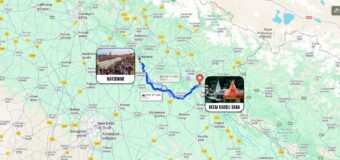Jumping into customer segmentation can feel a bit like opening a drawer you forgot you stuffed full of random tools. It’s interesting, a little chaotic, but oddly useful once you sort through it.
The whole idea is pretty simple. Break your audience into smaller groups so you’re not throwing the same generic message at everyone and hoping something sticks.
At first, it might seem like a lot (I remember thinking, Do I really need another marketing concept?), but once you start connecting the dots, it becomes strangely intuitive.
I was just going through a recent report about how Thomas Cook has partnered with MoEngage to bring a shift in customer engagement. To explain further, Thomas Cook will be using the martech capacity of MoEngage to segment its customer base and deliver targeted results.
The collaboration will be especially beneficial for the application users as the interactions remain data-driven yet highly personalized.
Understanding Customer Segmentation And Its Importance In The Tourism Sector
The customer segmentation definition is grouping people by whatever traits they share, including demographics, habits, tiny quirks like “only buys during sales,” that sort of thing.
When you know who’s who, suddenly your messaging doesn’t feel like one giant copy-paste job. Tools like Adestra help with that because tailoring every message manually would be overwhelming for anyone.
Really understanding the definition beyond just memorizing a line kind of opens the door to better product decisions and deeper loyalty. When you have accurate segments, you can tweak what you offer in ways that feel intentional.
Customers pick up on that. It’s one of those slow-building habits that pays off big over time.
Again, I can share the example of the Thomas Cook and MoEngage collaboration. By improving customer experience, this collaboration can boost the conversion rates. In the process of intelligent customer segmentation, the company is now using the following elements.
- Contextualized Home Screens
- Personalized Banners
- “Next Best Action Predictor”
In an ET TravelWorld report, Narasimha Rao, the General Manager (India & MEA) at MoEngage, has mentioned,
“We are thrilled to be Thomas Cook’s preferred customer engagement partner. Our agile platform will empower Thomas Cook to overcome the limitations of legacy solutions, driving stronger customer engagement and measurable business outcomes.”
The results of the collaboration have been pretty impressive. In November 2024, the collaboration of Thomas Cook and MoEngage boosted the number of bookings by an impressive margin. Thus, Thomas Cook has been able to generate INR 1 crore in revenue.
Neeraj Singh Dev, the executive vice president of E-commerce at Thomas Cook India Limited, has acknowledged this growth. He has said that by using the advanced analytics of Moengage, Thomas Cook has been able to connect to all the customers at the various stages of their journey.
Thus, the company has been able to enhance the experience of all customers, which has been a positive step toward building brand loyalty.
The Role Of Data In Customer Segmentation In A Tourism Business
Data is the backbone here. Without data, you’re making guesses, and not the fun kind. Useful data shows up everywhere: transactions, website clicks, even those random moments when someone abandons a cart at 2 a.m.
When you put it all together, patterns start showing up, even if you weren’t looking for them at first.
Efficient data collection makes your marketing feel more specific, not “meh.” But there’s the whole privacy thing.
People want to know their info isn’t being tossed around, which means businesses have to be responsible. So, get permission, keep things secure, and avoid the sketchy shortcuts.
Balancing usefulness and ethics isn’t always pretty, but it’s necessary. When done right, data-driven segmentation helps companies deliver experiences that feel actually relevant in a market that’s, let’s be honest, loud.
Key Steps In Developing A Customer Segmentation Strategy
Building a segmentation strategy usually starts with gathering customer info. It is sometimes too much, honestly, and you end up scrolling through spreadsheets until your eyes glaze over.
But once you start digging, shared traits pop up. Those clues help shape potential segments. After that, businesses evaluate which ones make sense, profitability, strategic fit, all those boxes executives love to check. Then the fun part: building tailored plans for each group, from messaging to product tweaks.
But here’s the thing: segmentation does NOT stay still. Customers change, trends do their own unpredictable dance, and suddenly your once-perfect segment looks off. So you check in, adjust, maybe toss out what doesn’t work anymore. Flexibility is the name of the game, even though it’s not always glamorous.
Implementing Customer Segmentation For Marketing Success
Putting segmentation into practice is more than sorting people into neat little boxes. It’s figuring out what makes each group tick: why they buy, why they hesitate, and why they sometimes ghost your website.
When you understand that, crafting messages becomes easier. Younger audiences? Maybe social channels. Older ones? Email. And sometimes it’s… well, trial and error.
Segmentation also shapes how products get built and where they get shown. Sometimes you realize one group needs a totally different experience than another.
When brands lean into that, customers notice, and satisfaction usually goes up (sometimes faster than you expect). Plus, it keeps marketing budgets from leaking money into ineffective ideas—always a win.
Measuring The Impact Of Customer Segmentation On Tourism Business Outcomes
You’ll know segmentation is working when the numbers start moving: stronger sales, higher conversion rates, better retention, all those kinds of things.
But the numbers don’t always tell the full story. Customer comments, reviews, random survey replies—they fill in the “why” behind the data, even if some of the feedback stings a little.
Since segmentation builds momentum over time, you need long-term tracking to see the real impact.
It’s rarely an overnight success. And, yeah, comparing what you spent to what you earned tells you if the whole effort is worth keeping. (Spoiler: it usually is.)
Altogether, segmentation can completely shift how a business understands its audience. When done thoughtfully, it leads to smarter marketing, happier customers, and better profitability. Hard to imagine running a modern business without it, honestly.
Read Also:














